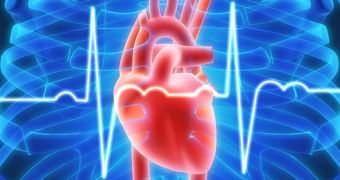In a paper published in yesterday's issue of the journal Nature, scientists describe the use of stem cell therapy to repair heart muscles that had suffered considerable damage as a result of a heart attack.
According to Science Daily, the experiments detailed in said paper were carried out on monkeys, and the heart cells that the scientists used to treat the hearts of these animals originated from human embryonic stem cells.
The same source details that, as part of this investigation, researchers blocked the coronary artery of several pigtail macaques for 90 minutes. This caused the monkeys to experience so-called myocardial infarctions, which the scientists say are a form of heart attack.
Because of these myocardial infarctions, the monkeys' blood flow pretty much went haywire, and several tissues, together with heat muscles, ended up being improperly oxygenated. The result was that the monkeys' hearts suffered considerable damage and started pumping blood less efficiently than before.
Looking to solve this problem that they themselves had caused, the researchers injected as many as 1 billion heart muscle cells derived from human embryonic stem cells into the pigtail macaques' damaged heart muscles. The cells were injected two weeks after the myocardial infarctions.
To make sure that the monkeys' bodies would not reject the foreign cells, the pigtail macaques were administered immunosuppressives. Other than that, the researchers pretty much allowed them to go about their business and settled for merely monitoring them.
By the looks of it, it only took the heart muscle cells transplanted into these animals' bodies about three months to become fully integrated into the macaques' hearts. What's more, researchers say that, on average, the transplanted cells regenerated about 40% of the damaged heart tissue.
“Before this study, it was not known if it is possible to produce sufficient numbers of these cells and successfully use them to remuscularize damaged hearts in a large animal whose heart size and physiology is similar to that of the human heart,” Dr. Charles Murry says.
“The results show we can now produce the number of cells needed for human therapy and get formation of new heart muscle on a scale that is relevant to improving the function of the human heart,” adds Dr. Michael Laflamme.
Although the idea to use stem cell therapy to treat damaged heart muscles sounds promising, the scientists behind these experiments say that it will be about four years before the approach is ready for clinical trials involving human patients.

 14 DAY TRIAL //
14 DAY TRIAL //